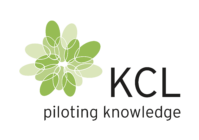Understanding Surface-Functionalized Nanofibers
Surface-functionalized nanofibers are a cutting-edge material that can significantly enhance the performance of various products. These nanofibers are derived from wood-based raw materials and are modified at the surface level to introduce specific functionalities. This modification allows them to interact more effectively with other materials, thereby improving the overall properties of the end product.
At KCL, we specialise in creating cellulose nanofibers (CNF) with different surface functionalities. These functionalities typically include cationic units, phosphoric acid, or sulphonic acid. The diameter of these nanofibers is approximately 4 nm, with lengths varying from 200 nm to several micrometres. This unique structure provides full optical transparency when dispersed in water, making them highly versatile for various applications.
Understanding the basics of surface-functionalized nanofibers is crucial for appreciating how they can be integrated into your products to enhance performance. By modifying the surface properties, these nanofibers can offer improved interaction with other materials, leading to superior product characteristics.
The Science Behind KCL’s Nanofiber Technology
Our nanofiber technology is rooted in advanced material science and engineering. The process begins with the extraction of individual cellulose nanofibers from wood-based raw materials. These nanofibers are then surface-functionalized to introduce specific chemical groups that enhance their interaction with other materials.
The surface functionalities we offer—cationic units, phosphoric acid, and sulphonic acid—are carefully selected to provide specific benefits. For instance, cationic units can improve the adhesion properties, while phosphoric and sulphonic acids can enhance the barrier properties against gases like oxygen. This makes our nanofibers highly adaptable for various industrial applications.
Our technology ensures that the nanofibers maintain their structural integrity while offering enhanced functionalities. This balance between structure and function is what sets our nanofibers apart, making them a valuable addition to any product development process.
Key Benefits for Your Product
Integrating KCL’s surface-functionalized nanofibers into your products can offer numerous benefits. One of the most significant advantages is the improvement in material properties. For example, our nanofibers can form highly viscous solutions in water, providing excellent stabilisation effects for dispersions. This can be particularly beneficial in applications such as coatings, adhesives, and composites.
Another key benefit is the enhanced barrier properties. When applied to paper or plastic surfaces, our nanofibers form highly packed assemblies that generate excellent barrier structures. This can significantly improve the product’s resistance to oxygen diffusion, making it ideal for packaging applications where maintaining product freshness is crucial.
Additionally, the optical transparency of our nanofibers when dispersed in water allows for their use in applications where clarity is essential. This makes them suitable for use in transparent films, coatings, and other applications where visual aesthetics are important.
Real-World Applications and Case Studies
Our surface-functionalized nanofibers have been successfully integrated into a variety of real-world applications. One notable example is in the packaging industry, where our nanofibers have been used to create oxygen barrier films. These films have shown remarkable performance in extending the shelf life of perishable goods, thereby reducing food waste.
In the field of coatings, our nanofibers have been utilised to enhance the durability and performance of protective coatings. The improved adhesion and barrier properties provided by our nanofibers have resulted in coatings that are more resistant to environmental factors, thereby extending the lifespan of the coated surfaces.
Another exciting application is in the realm of biomedical devices. Our nanofibers have been used to create biocompatible and highly functional materials for medical implants and wound dressings. The unique properties of our nanofibers have contributed to improved patient outcomes and faster healing times.
How to Integrate KCL’s Nanofibers into Your Products
Integrating our surface-functionalized nanofibers into your products is a straightforward process. The first step is to identify the specific functionalities that would benefit your product the most. Our team of experts can assist you in selecting the appropriate surface functionalities based on your product requirements.
Once the appropriate nanofibers have been selected, they can be incorporated into your product formulation. This can be done through various methods, such as blending, coating, or embedding the nanofibers into the product matrix. Our comprehensive laboratory services can provide the necessary support to ensure a seamless integration process.
We also offer consultancy and support for larger co-development projects. This allows you to leverage our expertise and resources to optimise the performance of your products. By working closely with our team, you can ensure that the integration of our nanofibers is tailored to meet your specific needs and objectives.
Future Advancements and Potential of Nanofiber Technology
The future of nanofiber technology is incredibly promising. As research and development in this field continue to advance, we can expect to see even more innovative applications and enhanced functionalities. One area of potential growth is in the development of smart materials that can respond to environmental stimuli, offering dynamic performance characteristics.
Another exciting avenue is the use of nanofibers in sustainable and eco-friendly products. As the demand for environmentally responsible solutions grows, our nanofibers can play a crucial role in creating materials that are both high-performing and sustainable. This aligns with the broader goals of the bioeconomy, where renewable resources are utilised to create value-added products.
At KCL, we are committed to staying at the forefront of nanofiber technology. Our ongoing research and development efforts aim to push the boundaries of what is possible, ensuring that our customers have access to the most advanced and effective materials available. By partnering with us, you can be confident that you are leveraging the latest advancements in nanofiber technology to enhance your product performance.
